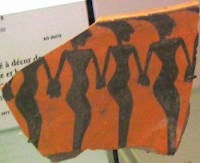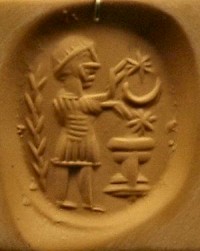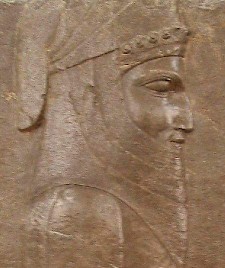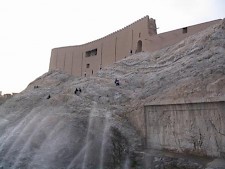Rhagae
Q636188Rhagae (Old Persian Ragâ): religious center in ancient Media, suburb of modern Tehran.

Rhagae is situated on a very ancient road. It started in Babylonia, went through Ecbatana to Rhagae (Tehrân), and from there through Parthia to Susia (Tus near Mashad), where it divided. Its northern branch was to become known as the Silk road: it went through the Karakum desert to Margiana (Mary or Merv) and Bactra (Balkh, near modern Mazâr-e Sharîf). From there, the road went across the Pamirs and continued to China. The southern branch went through Aria, Arachosia, and from there to the Indus valley.
For centuries, traders have passed along these roads and visited Rhagae, where they could choose between three roads across the Elburz mountains to the Caspian Sea. The excavations at Chesmeh Ali, a part of modern Reyy, have shown that people were already living there in the Early Bronze Age.
Rhagae is mentioned in several ancient texts. The oldest information comes from the Jewish book Tobit, where it is stated that there were Jews living in Rhagae.note This may or may not be true.

Jews were not the only inhabitants of Rhagae; it was also an important town for the Zoroastrians - probably some kind of religious capital. The Avesta mentions a town "Ragha of the three races" as one of Ahuramazda's special creations.note The town is subject of two questions in a kind of catechism:
Question: How many masters are there?
Answer: There are the master of the house, the lord of the borough, the lord of the town, the lord of the province, and Zarathustra the high priest is the fifth. So is it in all lands, except in the Zarathustrian realm; for there are there only four masters, in Ragha, the Zarathustran city.
Question: Who are they?
Answer: They are the master of the house, the lord of the borough, the lord of the town, and Zarathustra is the fourth.note

In other words, an important Zoroastrian leader held the position of province governor. That Ragha is identical to Rhagae, can be deduced from the work of the Arab geographer Yaqut ar-Rumi (1179-1229 CE), who writes about a town named Rai, which certainly is Rhagae:
Ustûnâwand, a celebrated fortress in the district of Danbawand, in the province of Rai. It is very old, and was strongly fortified. It is said to have been in existence for more than three thousand years, and to have been the stronghold of the Masmoghân of the land during the times of paganism. This word, which designates the high priest of the Zoroastrian religion, is composed of mas, "great", and moghân, which means "Magian".
We may therefore assume that Rhagae was the seat of a dynasty of Zoroastrian leaders, who may or may not have been greatmagians. (What ar-Rûmî means with "Magian" is unclear.)
In the Summer of 521, it was the place where the Median rebel king Phraortes was arrested by troops of the new Persian king Darius I the Great. In the summer of 330, the last Persian king, Darius III, fled through Rhagae, pursued by Alexander the Great, and was killed soon afterwards by Bessus. In connection to these actions, one of the Alexander historians, Duris of Samos, records a terrible earthquake that took place shortly after and destroyed many villages.

The town was refounded by the Seleucid king Seleucus I Nicator (311-281) under the name Europos. In the Parthian period, Rhagae, now called Arsacia, was the spring residence of the kings (they spent their winters in Ctesiphon in Babylonia and the rest of their time in Hecatompylos). According to Isidore of Charax, it was the strongest city in Media.